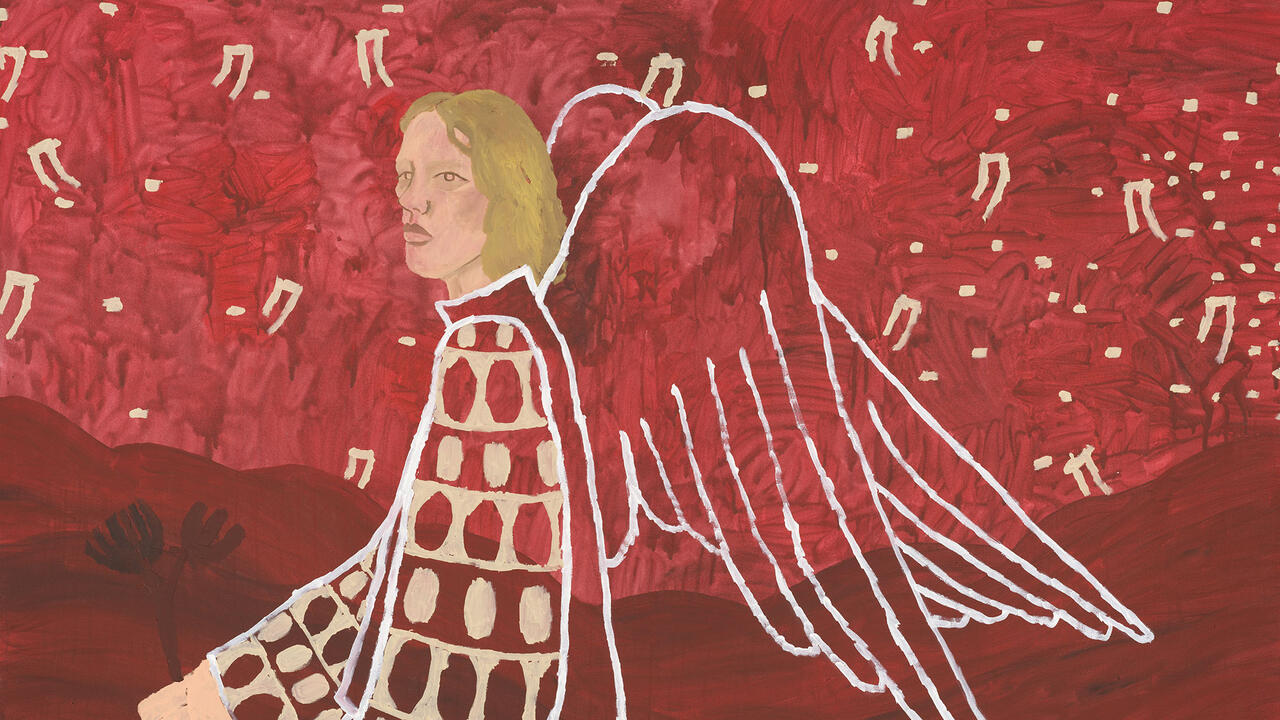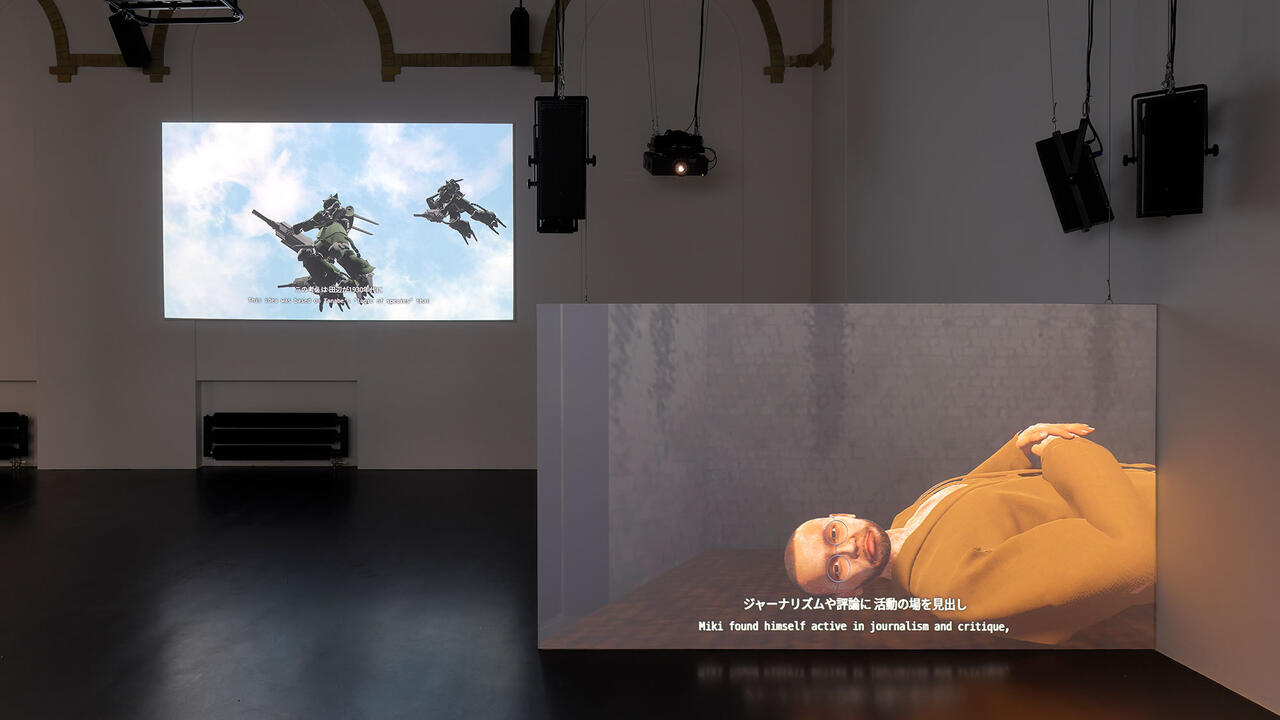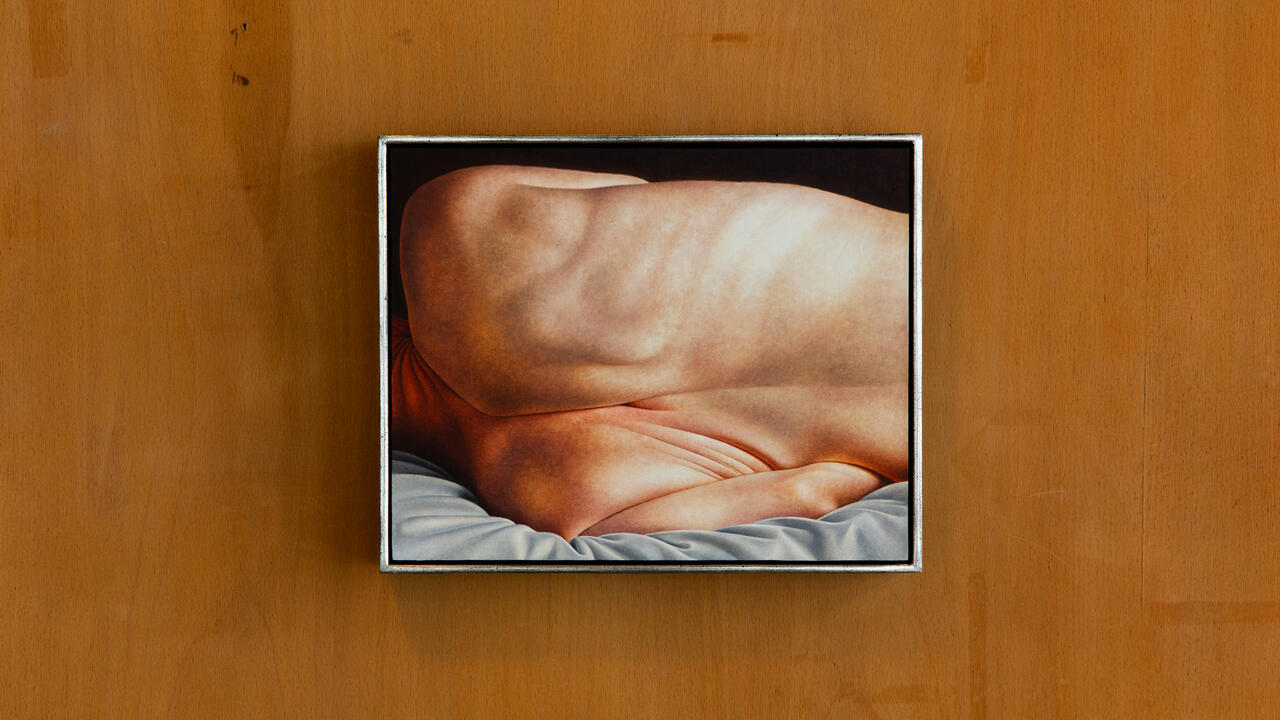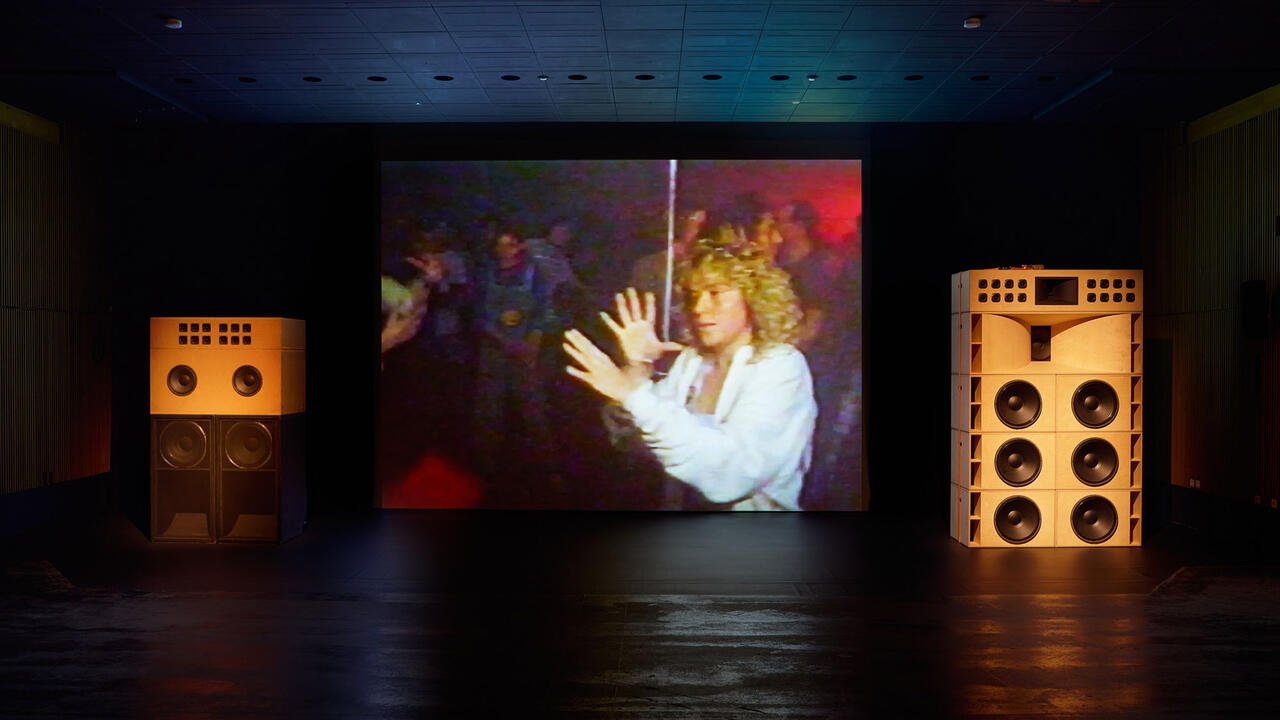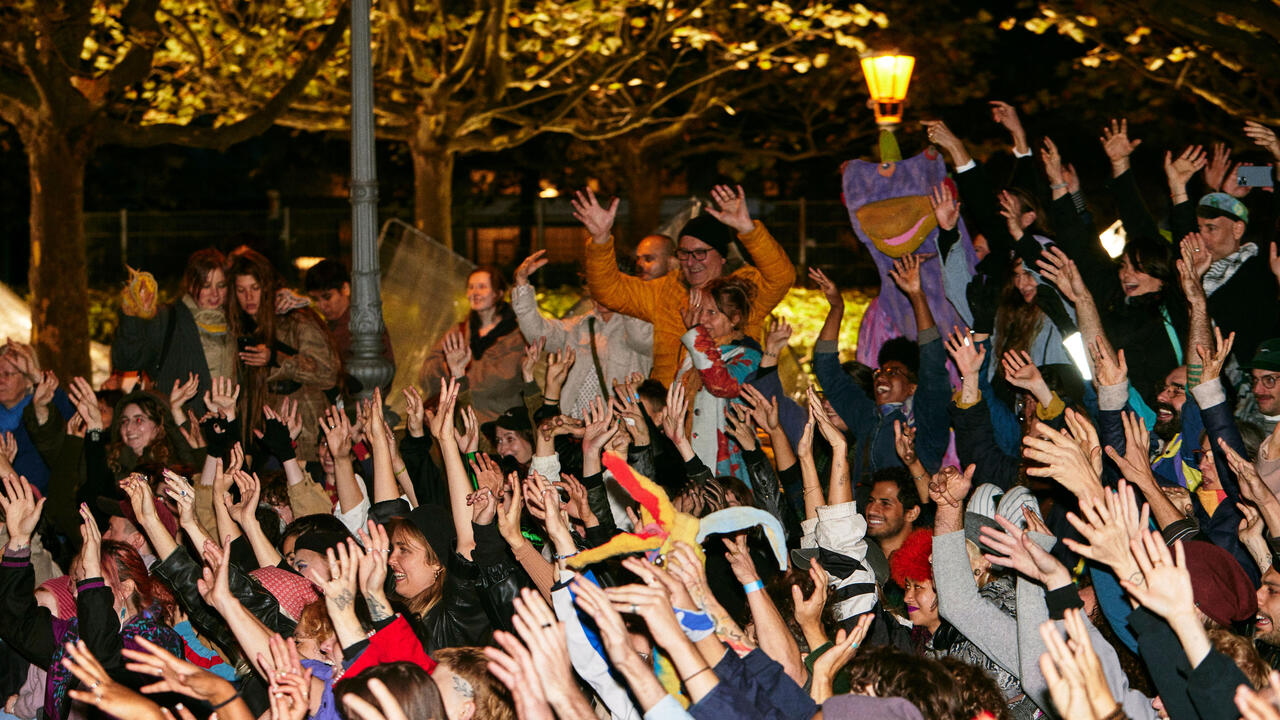Michael Smith
Dan Gunn, Berlin, Germany
Dan Gunn, Berlin, Germany

How does a fictional character age – both physically and in the public eye? This question is now a critical one for the artist Michael Smith, who has performed for decades as two fictional characters: ‘Mike’ and ‘Baby Ikki’. Mike, an out-of-touch Everyman, is always slightly behind the times, and ages with artist himself. Baby Ikki, however, with his signature petulant utterances, always wears the same ruffled romper and sunglasses – constants that are at odds with the ageing body underneath.

‘Timeline (1951–2016)’, Smith’s solo show at Dan Gunn, takes its name from a new 2016 installation, which was shown here with a room of works on paper, dating as far back as 1975. The work comprises a silent, darkened room divided by a translucent scrim, behind which a disco ball hangs from the ceiling, turning lazily. Four coloured ceiling lights cross in mid-air to form a ghostly ‘X’, which is made visible by occasional puffs from a smoke machine. The digits ‘1951’ – the year of Smith’s birth – are projected onto the gauze, and the date increases every few seconds until it reaches 2016, at which point the sequence begins again.
Smith has often used disco balls in his videos, performances and multi-media installations. For his 1979 performance USA Free-Style Disco Championship, Smith entered a real disco contest a Mike. And, in 1997, well after the heyday of disco, Mike became the Founder and President of ‘MUSCO’, a fictitious lighting company specializing in club and psychedelic lighting that was sliding towards bankruptcy (MUSCO: 1967–1997, 1997, with Joshua White). Both these works reveal how Smith’s deadpan humour examines what it means to be ‘behind the times’ – a concept that slides from comical to melancholy in the near-empty disco room at Dan Gunn. In a 2007 conversation with Mike Kelley, a longtime friend and collaborator, Smith spoke of how he associates the disco ball with the tragedy of the AIDS era. It might also stand for the cyclic obsolescence of fads, such as
performance art or disco.

In the same conversation, Smith revealed that he had somewhat lost the will to make performance art: it was too taxing. He continued finding ways to distribute decision-making among his collaborators, while also turning to other kinds of solo production, including his drawings, which he had rarely exhibited. In the 11 drawings that accompanied the installation at Dan Gunn, one can see traces of Mike and Baby Ikki as they’ve emerged over time. The drawings sort through the quotidian, middle-Americana motifs of Mike and Ikki’s universes: TV dinners, fax machines, off-the-rack business suits. One, Backpacks Drawn From Memory (2005), is an assortment of bags and packages clustered on a timeline stretching from 1950 to 2000: a joking categorization of the banal and everyday. In a similar vein, Good Thru (2002) comprises tracings of four credit cards belonging to Michael A. Smith.
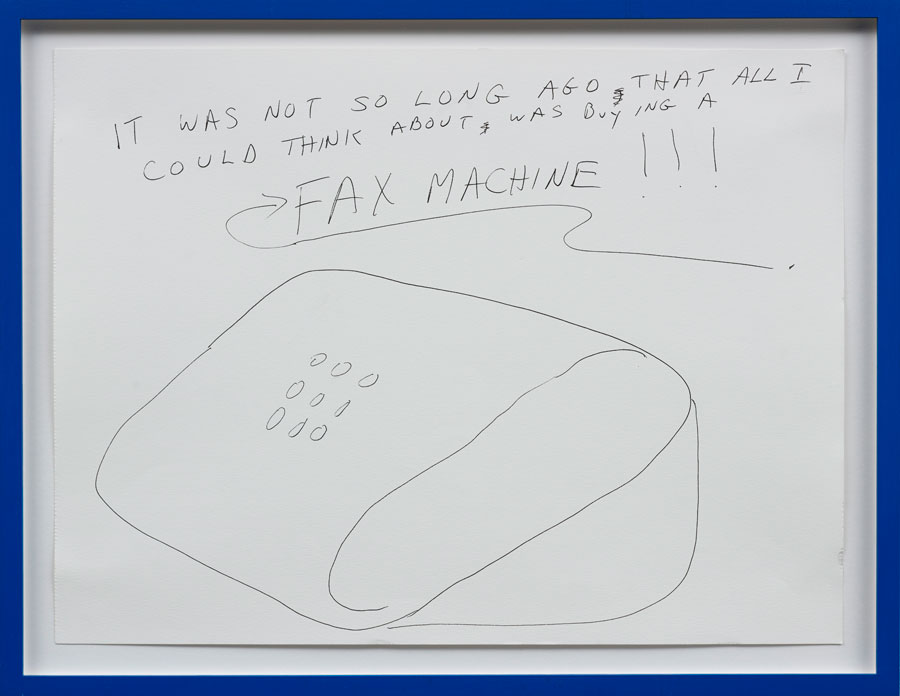
Time and again, Smith’s work implores: ‘Take off your pants!’ (the title of a 2005 installation with White). That line is quintessential Smith, blending both what he calls his ‘potty-oriented’ ‘juvenile humour for adults’, and more poignant references to exposure, humiliation, intimacy – and courage. It’s brave to show up in front of a gallery audience in a nappy but, after decades of being known for doing so, it may be braver not to. ‘Timeline’ seems to represent what happens when the artist takes off his trousers. You don’t see Mike or Baby Ikki – you see Michael Smith.
Main image: Michael Smith, Timeline (1951-2016), 2016, multi-media installation, disco ball, lights, fog machine, scrim, looped video projection. Courtesy: Dan Gunn, Berlin










